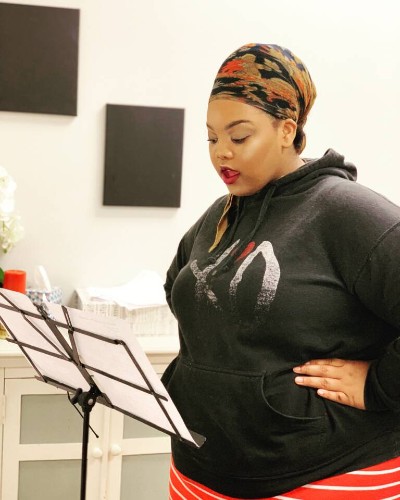
Many voice students find it most difficult to sing in the head voice which is also called the upper and middle registers. We speak all day long in our chest voice. Therefore, the chest voice tends to be much more developed in most singers than the head voice.
How to Find the Head Voice
Some students might not even know what the head voice feels like or is “supposed” to feel like. In order to develop an awareness for what the head voice feels or sounds like, I have my students start out by mimicking an owl. We make this sound with a lot of space in the mouth (very hollow, like a cave) and by closing the lips like a wind tunnel. We then make a “hoo” sound in a comfortable part of the upper register.
The result should be a very hollow and rounded owl hoot kind of a sound. This will be the quickest way to find the head voice. Once the head voice is established, the goal is to develop it over time. Developing the head voice will assist in expanding and growing the range.
Developing the Ability to Sing in the Head Voice
From the “hoo” sound, I have students slowly change their vowel and morph into an eee vowel. So the exercise turns to “hoo-eee”. Once the E sound has been established and feels more focused and resonant, I ask them to descend down a five-note scale on -eee. (5-4-3-2-1) starting at a comfortable upper register pitch and descending.
The goal is to keep that same feeling of resonance that they felt on the onset of the exercise to the very last note. The tendency is to lose resonance around the 2nd or 3rd descending note. However, with practice, the student can strengthen these pitches to sound resonant over time.
Breathiness in the Head Voice
If a student is experiencing breathiness in the head voice, it is because
1.) the head voice hasn’t been practiced much, or
2.) the vocal cords are not closing all the way.
In order to feel that the air is not escaping through the cords unnecessarily, I use exercises focused around nasal or lipped consonants such as, -ng, -n, or -m. Use any of these consonants on an ascending/descending 5-note scale. Remember to keep the jaw relaxed or unlocked for these exercises.
Learn More About Our Voice Lessons
Hopefully you’ve found this short introduction to singing with the head voice helpful! To learn more about our voice lessons at Martucci Music, click the button below!